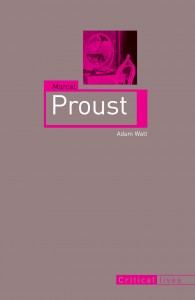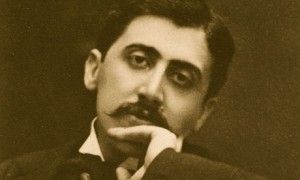 Marcel Proust
Marcel Proust
by Adam Watt
Reaktion Books. 208 pages, $16.95
THIS IS an amazing book, given its small size, standing on the backs of much weightier biographies of Proust, such as the recent door stopper by Jean Yves Tadié. It also makes excellent use of Proust’s correspondence. It covers everything, but its economy provides a perspective that lets us see both the forest and the trees.
Tracing three strands—Proust’s social life, his writing, and his health—Watt carefully walks us through the process by which Proust finally arrived at his masterpiece, including his experience writing newspaper articles, pastiches (parodies of great writers), and essays like “On Reading,” which led to the final form of his own novel—a form that was anything but final as it turns out. In 1986, yet another of Proust’s typescripts was discovered,
This story has been told many times before, but Watt’s selection of detail makes it new. For instance, there’s the shrapnel Proust’s servant found in his hat after Proust walked home from a concert, when his taxi broke down during a bombing raid in World War One. Watt has a shrewd eye for golden nuggets, such as the alternative titles Proust was considering for his work (“The Stalactites of the Past”; “Reflections in the Patina”; “Mirrors of the Dream”), and the fact that “Lucien Daudet confirmed years later that in order to complete “a magnificent page of Sodom and Gomorrah” Proust read the entirety of Darwin’s The Power of Movement in Plants (1880), evidence for what Daudet called Proust’s yearning “not to leave anything to chance.”
That Proust’s labor was a heroic one Watt makes plain, especially in the last chapter, when it seems as if the writer, whose father and brother were both prominent physicians but who considered doctors little more than quacks, seems to have self-medicated himself to death with what Watt calls “uppers and downers” in order to complete his novel. Before that happens, however, we are reminded why Proust is as great a character as any in his book. “I truly loved Alfred,” Proust wrote to his first lover, Reynaldo Hahn, after the accidental death of Alfred Agostinelli, a servant with whom Proust was obsessed. “It’s not enough to say that I loved him, I adored him. And I don’t know why I am writing this in the past tense. I still love him.” (At the same time, this enormously sociable Parisian could write: “I am only myself when I am alone, and I only profit from others in so far as they permit me discoveries within myself.”) By the time Proust was hiring musicians during the War to come to his room and play Beethoven, Fauré, and Franck while he lay on his bed with his eyes closed, one may be amazed that this story can pull one in yet again; but in Watt’s expert hands it does.





